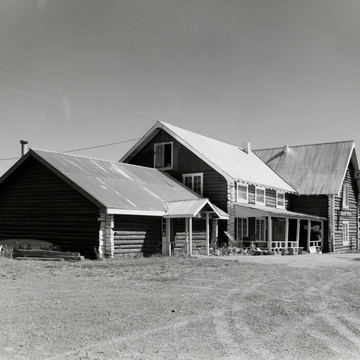Arne Sundt built the two-story log roadhouse now serving as the Gakona Lodge and Trading Post. An earlier roadhouse, built in 1905, still stands, now used for storage.
Located between the Gakona and Copper rivers at the divergence of the Valdez-Fairbanks and Valdez-Eagle trails, Gakona was well situated for traffic. The U.S. Army built the Trans-Alaskan Military Road in 1900–1905 in order to join its post at Fort Liscum, near Valdez, with Fort Egbert, at Eagle. At the junction of the winter trail to
This first roadhouse, located on the banks of the Gakona River, is built of round logs, saddle notched at the corners. The original building measured approximately 20 feet by 30 feet, with a 15-foot-by-30-foot shed-roofed addition. On the interior, the ground floor was one open space, with a stove on one side. The second floor had two 5-foot-by-9-foot sleeping rooms partitioned with canvas on a light frame; the rest was one room.
The second roadhouse, also built of round logs, is L-shaped in plan, with several additions, and much larger than its predecessor. The corners of the gable-roofed building are square notched. Although patrons now sleep in private rooms, there is an air of shabby gentility and past grandeur to the lodge that adds to the roadhouse experience. There are more than a dozen buildings at the site, housing the bar, restaurant, and lodge. The location is still a prime one, and the roadhouse remains a popular stop.














